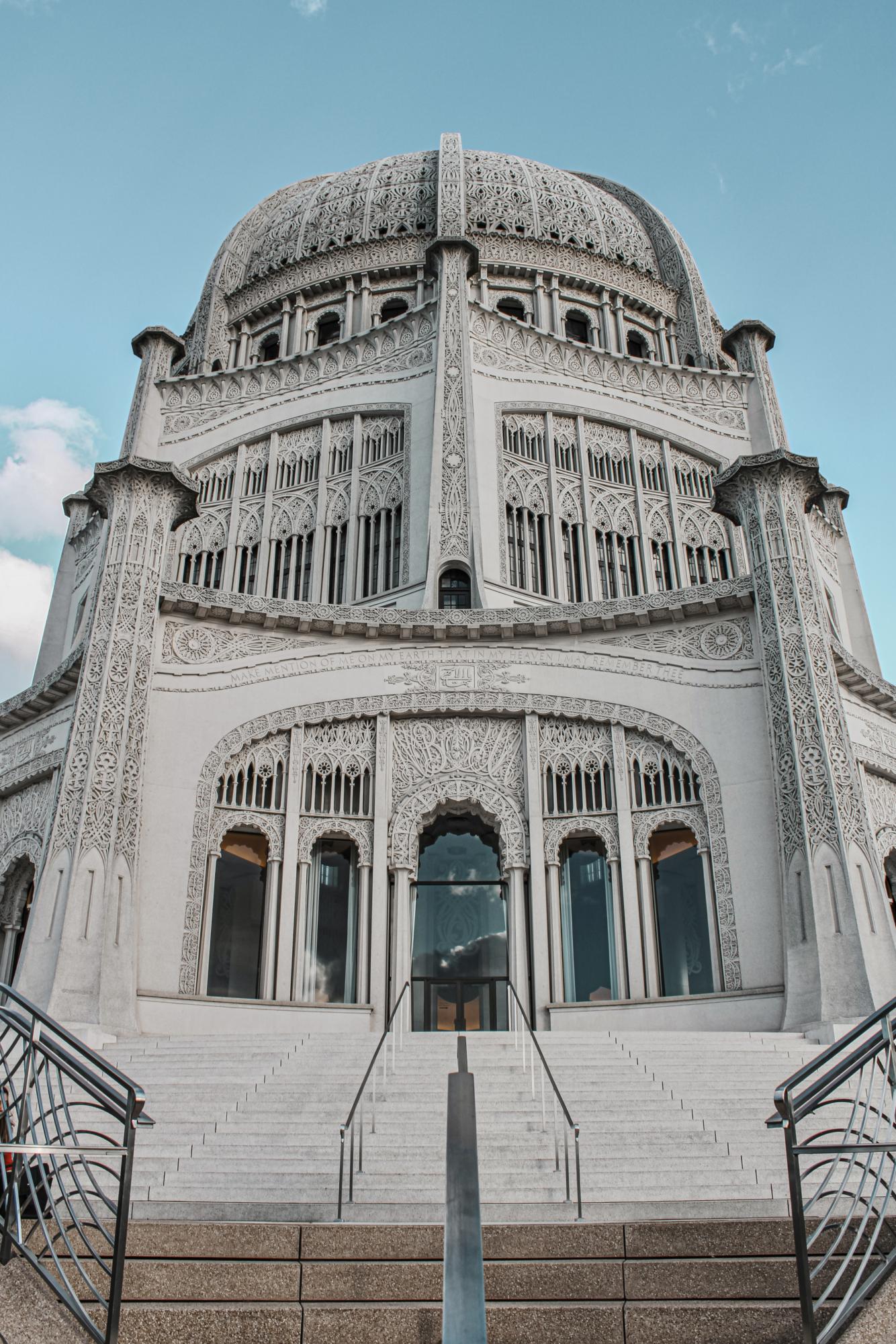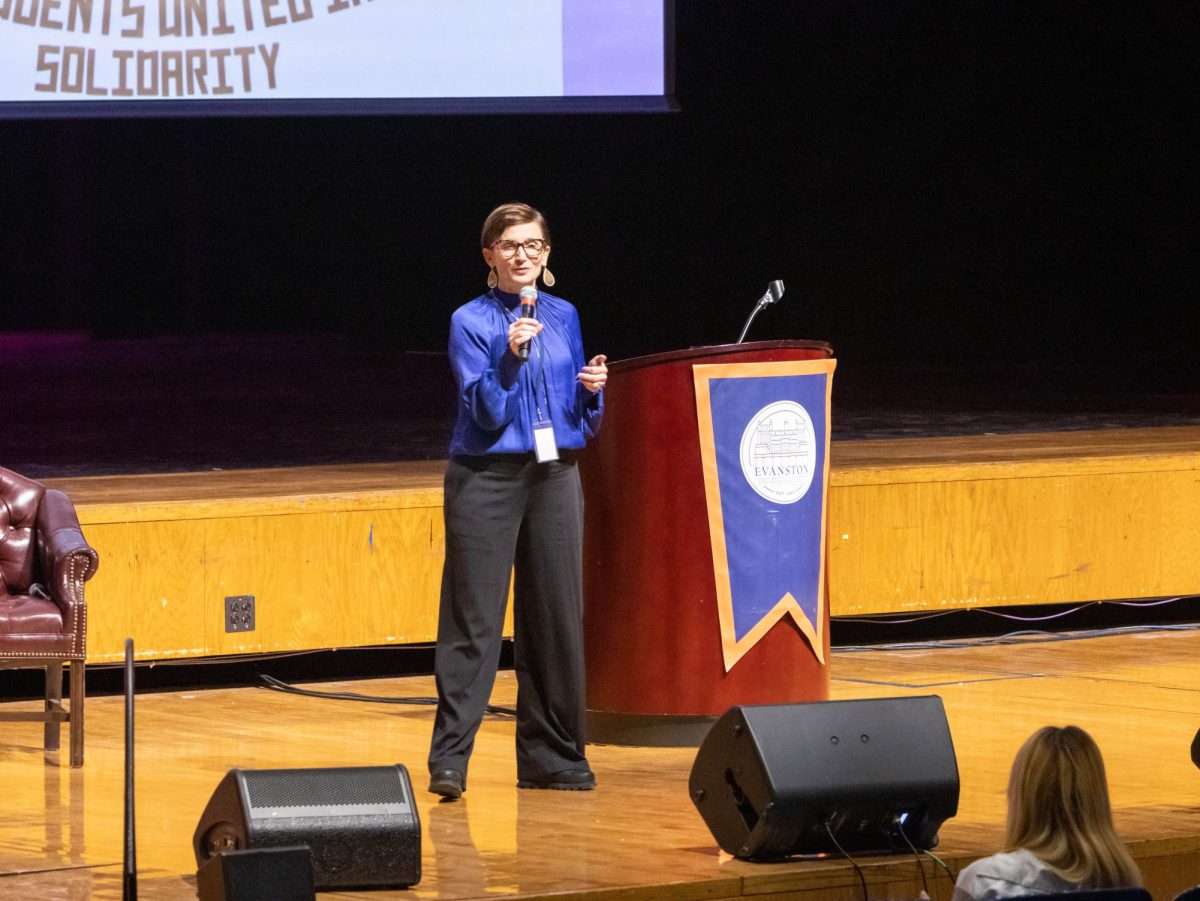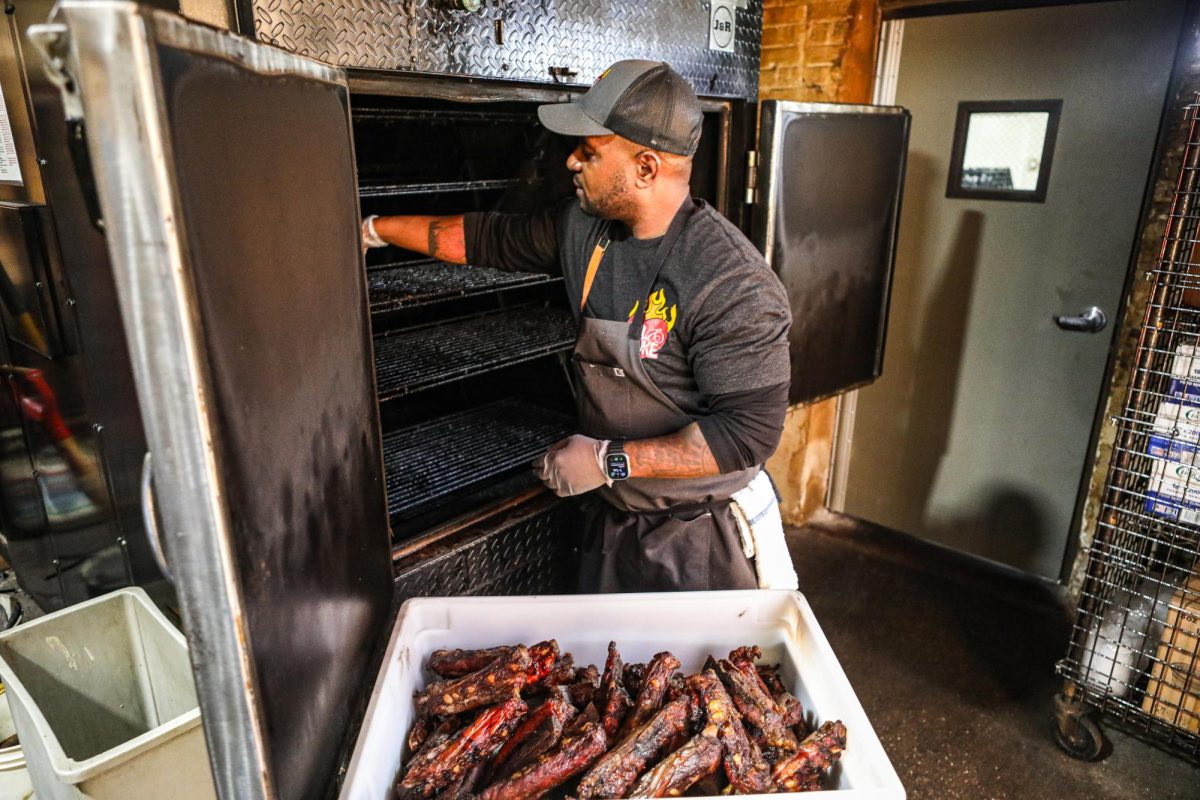As Taylor Thurston drives from her home in Glenview to volunteer on the border of Wilmette and Evanston, she passes through quintessential Chicago suburbia. Magnificent properties line the streets while expansive and expensive country clubs sprawl across acres of land. But when she reaches her destination, a different kind of beauty fills her vision. The Baha’i House of Worship rises above luscious trees and lakefront properties, standing out as a pillar of the Bahá’í faith and a symbol of unity.
The Baha’i faith was founded by the prophet Bahá’u’lláh in 1844. Baha’is believe that the founders of the world’s biggest religions have been sent by God as representatives of a divine plan for the education of all humans, and that Bahá’u’lláh is the latest of these manifestations of God. Bahá’u’lláh’s mission, now passed down for generations of Bahá’ís, was to unite the world’s religions and create a universal church. As a whole, Baha’is believe in equality and justice across all demographics, advocating for women’s rights and the abolishment of slavery as far back as the 19th century. Thurston, a lifetime Baha’i, reflects on the Baha’i mission.
“When we don’t believe we’re interconnected and we don’t believe that we’re all one, it manifests itself in different ways. We have racism, sexism and extreme gaps between the wealthy and the impoverished. And religion’s main purpose is to be a source of unity, and also to bring people to actually achieve unity.”
The temple in Wilmette is the oldest surviving Bahá’í House of Worship in the world and serves all of North America. It is a central symbol of a religion with millions of dedicated followers across every part of the world, and yet it’s in a random suburb of Chicago. So, why Wilmette, of all places?
The answer can be trace back to 1893, when the Parliament of the World’s Religions met in Chicago. This event created a significant Baha’i population in the U.S. and Canada and led to plans to build a temple around Chicago in 1903. ‘Abdu’l-Bahá, the son of the religion’s founder, commissioned the construction, but due to funding shortages and delays, the site wasn’t completed until 1953.
The troubles that construction ran into bring up one unique aspect of the Baha’i religion: only people within the faith can contribute money.
“It’s a privilege to give to the funds,” Vodden says. “I think it means that we’re not beholden to anybody. The money that you give is a secret, so nobody knows what you’re giving… In fact, it’s seen as a sacrifice. The amount that you give has to be a sacrifice for it to be of value.”
When the Baha’is finally garnered the funds to finish the looming concrete structure, it became a world-renowned place of prayer and unity. Now, it serves Baha’is and anyone else interested in the religion on a daily basis. Vodden explains what a normal day at the temple looks like.
“We have [a] sort of informal devotional [program] where we read prayers from the lectern at 12:30 and six o’clock [pm],” he states. “On Sundays, the devotionals at 12:30 are a little bit more formal, and we have a choir that sings.”
At a typical devotional, anybody can speak to the assembled people as long as it’s from the scripture of a recognized religion.
“The temple is not typical as a house of worship,” Vodden continues. “We don’t have a congregation and we don’t have clergy; we don’t have clergy [at all] in the Baha’i faith.”
The Baha’i faith’s strong roots in its community means that a central location for Baha’is from all over the country to congregate is important. 1233 Central Street in Evanston serves as the Baha’i National Center, hosting the Baha’i national convention alongside the temple every year. The power structure of the Baha’is is purely elective, so about 300 elected delegates from all over the country come together to elect a national governing body at the national convention.
On an international level, the building is one of eight Baha’i Continental Houses of Worship around the world. Each House of Worship has certain architectural similarities, like that they all have nine sides. The number nine represents completeness, which relates to the Baha’i mission to unify the world.
Each temple also contains unique features based on its geographical region. Carvings on the nine pillars of the Wilmette temple are an example of this, showcasing world religions with symbols like the Star of David, crucifixes, and the Islamic star and crescent to demonstrate freedom of religion and expression in the U.S.
“[Baha’i temples] represent the culture of the people,” Vodden explains. “There’s always something in the temple that represents the culture. For example, the temple in Port Moresby in Papua New Guinea has a lot of weaving in it—even metal weaving on the roof. And that is indicative of basketry in the area… And all of [the worship houses] have a beautiful garden.”
The Baha’i House of Worship in Wilmette has a circular garden surrounding the temple with glistening pools, perfectly trimmed bushes and deliberately placed flowers.
“The gardens represent diversity,” Vodden says. “If the gardens are all just one flower, it would be very uninteresting, right? It’s a demonstration that humanity is beautified by diversity and that no one race is dominant, and it shouldn’t be dominant, and that all people can contribute to the beauty of humanity.”
The gardens’ appeal to multiculturalism is supported by the fact that the gardens and the temple are open to everyone.
“You’ll see a lot of people when they go into the gardens; they’ll be praying, they’ll be meditating, they’ll be sitting there talking with friends, deepening, and I think it really just gives people the space to admire beauty while also reflecting on the soul, reflecting on life, reflecting on where their own journey starts,” Thurston states.
Unlike a church or synagogue that might focus on outreach at a local level, the Baha’i temple appeals to a national and international audience. People travel from around the world to see this structure or find calm in its gardens.
Harper Jamison, a senior at ETHS on the sailing team, has sailing practices right next to the temple.
“A lot of people come from a lot of different places to see it,” Jamison observes. “I have talked to a lot of different people that have just been around [the temple] or just been around the beach when I’ve been there, and they’ve just said [what] a great place it was, how beautiful it is, and it’s definitely very pretty.”
The temple doesn’t just stick out from the prototypical suburban landscape; it represents the togetherness of varied cultures and people in an area that lacks economic and ethnic diversity. It allows for meditation, prayer and calm that feels like a far cry from hectic lives of social media and divisiveness. It offers beautiful sunsets and views for anyone who chooses to walk their dog or take a run past the temple.
“If you’re not careful, you just take it for granted,” Vodden concludes. “You come to work and you don’t think about where you are. And sometimes I just have to remind myself where I’m working, that this has a very important spiritual significance for the continent as well as the world. And it’s important to keep that in perspective and to maintain that reverence for the work that you’re doing.”














